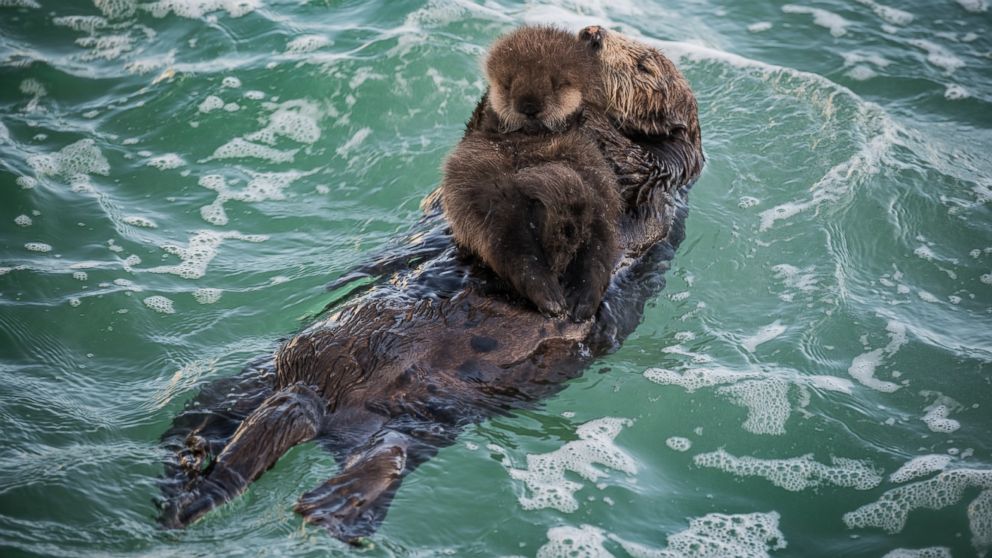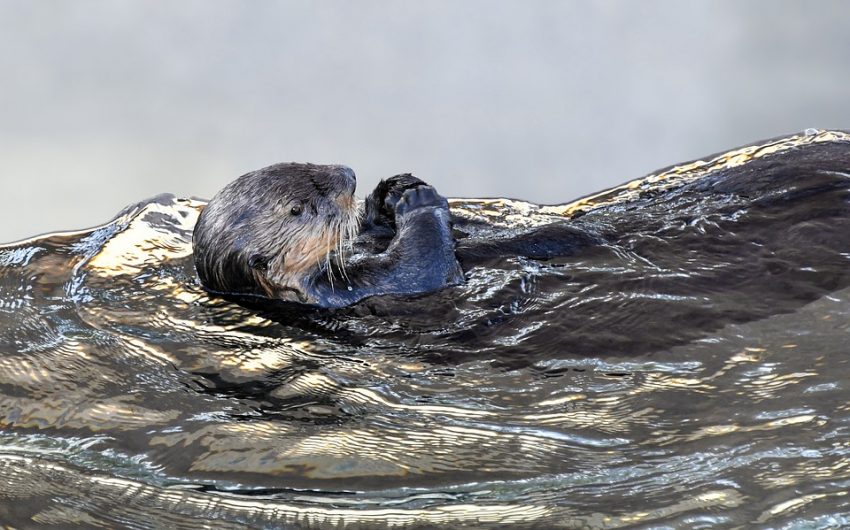The otter, which has lived on Earth for five million years, is in danger of extinction. Unfortunately, only a few are left, and they can rarely be seen since they are more active at night. As a result, many Wildlife Foundations have chosen the otter as their”Animal of the Year” for 2021 to raise awareness of the threats surrounding them. This is an excellent opportunity to get to know these fascinating animals.
1) Aquatic Animals
Sea otters are at their best when they are in the water. With their long bodies and fin-like hind legs, they swim in circles with ease. Their eyes, nose, and ears usually remain on top of the water. If they want to dive underwater, they pinch their ears and nose to keep the water out. Smart! This allows them to see, smell, and hear everything as they swim.
2) The Thickest Fur
Sea otters have the thickest hair of any animal in the world. For instance, there would be 165,000 hairs on a postage stamp size item. The fur is made up of two layers. The bottom layer holds air to prevent it from freezing in seawater. The long hairs on the top layer serve as a raincoat, which helps keep the bottom layer dry.
3) The Otter Mother
Sea otter pups can’t swim well right after birth. However, they can sleep comfortably on their mother’s tummy. The baby can float on the water due to their unique fur, but they can’t catch up with their mother when she goes to get food. If mom doesn’t wrap them up with seaweed, they’ll swim away.

4) Sleep Together
Sea otters sleep in the water while floating on their backs. To keep the pups from swimming away, the mother usually wraps a long piece of threaded seaweed around them and ties it to the bottom. That way, when they wake up, they won’t have to swim back. Otters will also doze off by holding each other’s legs so as not to lose sight of each other.
5) They Love Shellfish
Sea otters love shellfish. They dive underwater and bring them back along. Afterward, they lie on their backs above the water, place a flat stone on their stomachs with which they will smash the shells until they crack open. They will then slurp it up and enjoy the meal.
6) Otters Can Dive For up to Seven Minutes
Otters can stay underwater for as long as seven minutes with ease. Their webbed paws help propel them when they swim and dive. Since they are such good swimmers, they hunt for fish and dive for amphibians. Otters can swim almost noiselessly and can detect all sounds and smells. Their sensory organs line up just above the water level while the rest of their body is in the water. Sea otters have highly developed oscillators (whiskers) that allow them to spot prey even in muddy water.

7) Good Appetite
Otters have a fast metabolism and will eat what they can; they consume 15-25% of their body weight in food per day. Thanks to the otter’s loose skin, the animals can form small pockets always to hide something to eat.
Due to the large amount of fish they eat, otters have long been trapped in large numbers as pests in fishponds, and many otters have drowned in fishpond traps. Nowadays, electric fences and otter nets (metal rods attached to fish traps) protect fishponds from fish predators.
What Can We Do to Protect Otters?
What we can do for otters is to protect their habitat. In particular, water quality is essential for their favorite food, fish. By limiting the influx of pollutants, creating and reusing water bodies, and maintaining natural structures, we can help keep the otter population calm.

